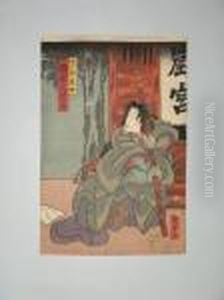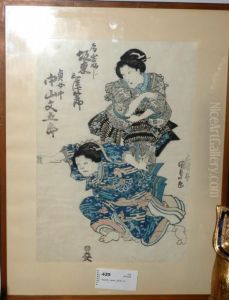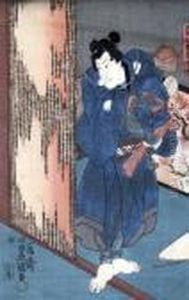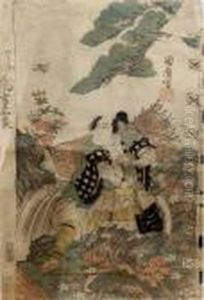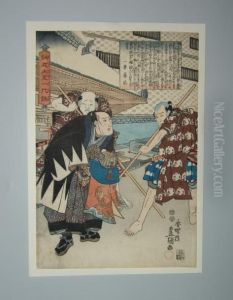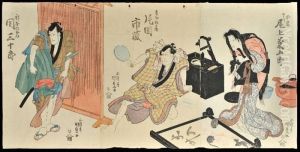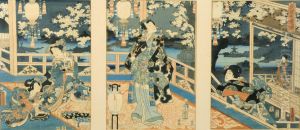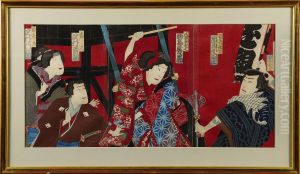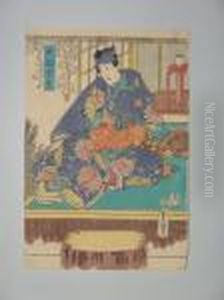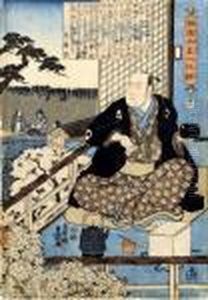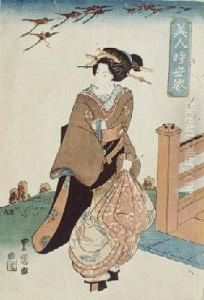Gototei Kunisada Paintings
Gototei Kunisada, also known as Utagawa Kunisada, was a prolific and successful ukiyo-e artist of the late Edo period in Japan. Born in 1786 in Honjo, an eastern district of Edo (now Tokyo), Kunisada was to become one of the most popular and financially successful designers of ukiyo-e woodblock prints in his time. His father was an affluent ferryboat owner, which allowed Kunisada access to a good education and the arts from a young age. He showed an early interest in drawing and by the age of 15, he was accepted into the studio of Toyokuni I, one of the leading ukiyo-e masters of the time and the head of the Utagawa school. Kunisada later adopted the name Toyokuni III, a testament to his perceived inheritance of his master's talent and standing.
Throughout his career, Kunisada was highly prolific, producing over 20,000 designs for woodblock prints, including kabuki theater actors, beautiful women, sumo wrestlers, scenes from history and folk tales, landscapes, and erotica. His work was characterized by its vibrant colors, exquisite detail, and dynamic compositions. Kunisada's prints were immensely popular during his lifetime, often outselling those of his contemporaries, including the likes of Hokusai and Hiroshige.
Despite his success, Kunisada's work was not immediately appreciated by later generations and early Western collectors of Japanese art, who often considered it less refined than that of his contemporaries. However, in recent decades, his contributions to the ukiyo-e genre and his role in shaping the visual culture of the late Edo period have been reassessed and celebrated. Kunisada's ability to capture the spirit of his time, combined with his technical mastery and innovative approach to traditional subjects, have secured his place as one of the great masters of ukiyo-e.
Kunisada's legacy is also seen in his influence on the development of the Utagawa school and ukiyo-e in general. He trained numerous students, who carried on his style and techniques, contributing to the enduring popularity and evolution of the art form. Kunisada died in 1865, leaving behind a vast body of work that continues to be studied and admired for its artistic quality and historical value.







